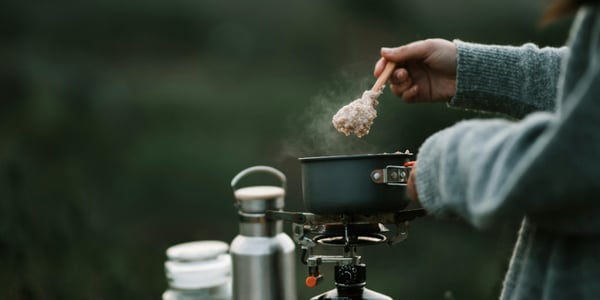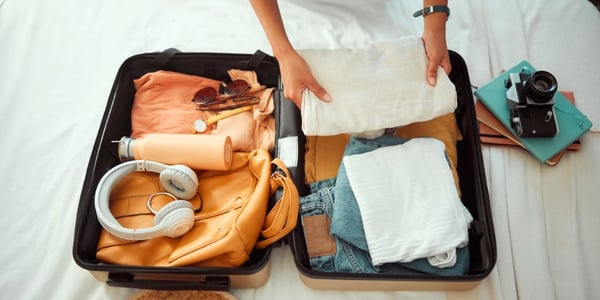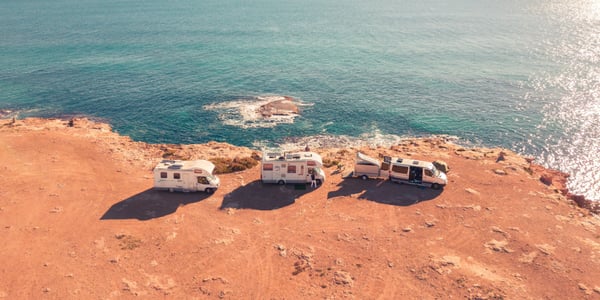Camping is a great way to connect with nature, escape the hustle and bustle of everyday life, and create lasting memories with family and friends. However, if you’re new to camping, the thought of packing for your first trip can be overwhelming. To help you prepare, we’ve compiled a comprehensive list of essentials to ensure your camping experience is enjoyable, safe, and comfortable. In this blog, we’ll cover what to pack and provide tips and insights to enhance your first camping adventure.
1. Choosing the Right Gear
Before diving into the packing list, choosing the right gear based on your camping destination, weather conditions, and personal preferences is essential. Here are some key items to consider:
Tent
Your tent is your home away from home in the great outdoors. When selecting a tent, consider the following:
- Size: Choose a tent that comfortably fits the number of people in your group. If you’re camping with family or friends, look for a tent labeled as a 4-person or 6-person tent, depending on your group size. It’s always better to have a little extra space for gear.
- Weather Resistance: Look for a waterproof tent with good ventilation. A rainfly is essential for keeping moisture out during unexpected rain showers. Additionally, check for features like a bathtub floor design that helps keep water from seeping in.
- Setup: Opt for a tent that is easy to set up, especially if it’s your first time. Freestanding tents are generally easier to pitch and can be set up on various terrains.
Sleeping Gear
A good night’s sleep is crucial for enjoying your camping experience. Here’s what you’ll need:
- Sleeping Bag: Select a sleeping bag rated for your expected temperatures. If you’re camping in colder weather, consider a sleeping bag with down insulation for warmth.
- Sleeping Pad or Air Mattress: Provides insulation and comfort from the ground. An inflatable air mattress offers more comfort but requires a pump, while foam pads are lightweight and easy to carry.
- Pillow: A travel pillow or stuff sack filled with clothes can work in a pinch. There are also inflatable pillows designed specifically for camping that take up minimal space.
Backpack
Choosing the right backpack is essential for carrying all your gear comfortably:
- Capacity: A backpack with 40-70 liters capacity is ideal for weekend trips. Make sure it has multiple compartments for organization.
- Fit: Ensure that the backpack fits your body well. Look for adjustable straps and hip belts that distribute weight evenly.
2. Clothing Essentials
Packing the proper clothing is crucial for staying comfortable during your camping trip. Here’s what you should include:
Base Layers
Base layers are essential for regulating body temperature:
- Moisture-Wicking T-Shirts: Choose synthetic or merino wool fabrics that keep you dry and comfortable by wicking moisture away from your skin.
- Long Underwear: Essential for cooler nights; look for lightweight options that provide warmth without bulk.
Insulation Layers
Insulation layers help retain body heat:
- Fleece or Down Jacket: Provides warmth when temperatures drop. A packable down jacket can easily fit in your backpack when not in use.
- Sweater or Hoodie: A versatile layer for chilly evenings around the campfire.
Outer Layers
Protect yourself from the elements with outer layers:
- Waterproof Jacket: Look for jackets with breathable fabric to protect against rain and wind while allowing moisture to escape.
- Hiking Pants or Shorts: Choose lightweight, quick-drying materials suitable for hiking and outdoor activities.
Footwear
Proper footwear is crucial for comfort and safety:
- Hiking Boots or Shoes: Ensure they are broken in before your trip to avoid blisters. Look for hiking boots with good ankle support if you plan on hiking on uneven terrain.
- Camp Shoes or Sandals: Comfortable footwear for around the campsite; sandals or slip-on shoes make it easy to relax after a long day of hiking.
Accessories
Don’t forget these important accessories:
- Hat: Provides sun protection during the day; consider a wide-brimmed hat or a baseball cap.
- Warm Beanie and Gloves: Useful for colder nights; pack lightweight options that fit easily in your backpack.
- Socks: Bring several pairs of moisture-wicking socks to keep your feet dry and comfortable throughout your trip.
3. Cooking and Food Supplies
One of the joys of camping is cooking outdoors. Here’s what you’ll need:
Cooking Gear
Investing in quality cooking gear makes meal preparation easier:
- Portable Stove or Grill: A compact stove is ideal for cooking meals; look for models that are easy to set up and use.
- Fuel Canister: Ensure you have enough fuel for your stove; check compatibility with your stove model before purchasing.
- Cookware Set: Lightweight pots and pans explicitly designed for camping will help you prepare meals efficiently.
- Utensils: Don’t forget spatulas, tongs, cooking spoons, and any other tools necessary for meal prep.
Eating Supplies
Bring along practical eating supplies:
- Plates/Bowls/Cups: Lightweight and reusable options are best; consider using collapsible bowls or plates to save space.
- Cutlery: Bring forks, knives, spoons, and any other utensils needed for dining.
Food Storage
Proper food storage is vital to keep perishables fresh:
- Cooler: Invest in a quality cooler that can keep items cold throughout your trip; consider one with good insulation properties.
- Food Containers or Bags: Store snacks and meals securely; resealable bags work well for non-perishable items like trail mix or granola bars.
Food Items
Plan your meals ahead of time and pack non-perishable items like:
- Dried fruits
- Nuts
- Granola bars
- Canned goods (like soups or chili)
Consider bringing fresh items like fruits and vegetables in your cooler. Pre-packaged meals can also save time during meal prep.
Click here or the button below to download our 50+ Travel: The Why, Where, and How eBook!
4. Safety and Navigation
Safety should always be a priority when camping. Here’s what to pack:
First Aid Kit
A well-stocked first aid kit should include:
- Adhesive bandages
- Antiseptic wipes
- Pain relievers (like ibuprofen)
- Tweezers
- Any personal medications
Consider adding specialized items based on your group’s needs (e.g., allergy medication).
Navigation Tools
Even if you plan to use a smartphone, it’s wise to have backup navigation tools:
- Map of the Area: Familiarize yourself with local trails and landmarks before heading out; this can be especially useful in areas with limited cell service.
- Compass or GPS Device: Essential for off-the-grid adventures; learn how to use them before setting out on your trip.
Multi-Tool or Knife
A good multi-tool can assist with various tasks around the campsite—from food preparation to gear repair—and can be invaluable in emergencies.
5. Lighting and Power
When night falls, proper lighting becomes essential:
Lanterns and Flashlights
Light up your campsite effectively by bringing along:
- Headlamp: Keeps your hands free while providing light; look for models with adjustable brightness settings.
- Lanterns: Great for illuminating larger areas around the campsite; consider solar-powered options as they are eco-friendly.
Extra Batteries or Power Banks
Ensure you have enough batteries for your devices or a portable charger (power bank) for smartphones. Solar chargers are also an excellent option if you’ll be spending extended time outdoors without access to power sources.
6. Personal Items
Don’t forget these personal essentials that enhance comfort during your trip:
Toiletries
Bring travel-sized toiletries such as:
- Toothbrush and toothpaste
- Biodegradable soap and shampoo
- Toilet paper (and a trowel if there are no facilities)
Consider packing items like deodorant or facial cleansing wipes, as they take up less space than traditional toiletries.
Sunscreen and Insect Repellent
Protect yourself from sunburns and pesky bugs by applying sunscreen regularly and using insect repellent as needed. Look for eco-friendly options that won’t harm local wildlife or waterways.
Towel and Washcloth
Quick-drying towels are ideal for camping trips where space is limited; microfiber towels are lightweight and absorbent options worth considering.
7. Entertainment and Comfort
After a day of hiking or exploring, winding down is essential. Here are some items that can enhance your camping experience:
Games and Activities
Pack lightweight games such as:
- Playing cards
- Frisbee or disc golf set
- A book or journal
Consider bringing along materials like sketchbooks or coloring books if you're traveling with kids—creative activities can keep everyone entertained during downtime!
Camp Chairs or Hammock
Comfortable seating options will make evenings around the campfire much more enjoyable. Portable camp chairs fold up easily, while hammocks provide an excellent way to relax between trees during lazy afternoons!
8. Miscellaneous Items
Finally, here are some additional items that may come in handy during your trip:
Trash Bags
Leave no trace by packing out all trash and waste from your campsite; biodegradable trash bags are an environmentally friendly option worth considering!
Rope or Paracord
Useful for hanging clothes, securing gear, or setting up tarps, paracord has multiple uses beyond just tying things together—it's strong enough to handle various tasks around camp!
Dry Bags
Keep electronics or clothes dry in case of rain or water activities; waterproof dry bags come in various sizes—ideal for keeping valuables safe while kayaking or hiking near rivers!
Click here or the button below to subscribe to our blog!
Your first camping trip can be an unforgettable adventure filled with excitement, exploration, and relaxation! By packing these essentials carefully—and taking time beforehand to plan meals/check weather conditions—you’ll be well-prepared to tackle whatever nature throws at you! Remember that preparation is key, so take time before heading out into nature so everything runs smoothly once you're there!
Related Content:







